I’ve recently made my first ever visit to Vietnam and as always, I was ever ready to embrace a new destination. To be honest, I wasn’t expecting much as majority of the people that have been to HCM told me that “it’s all just about the war really”. Others who enjoyed themselves gave much credit to the food. My itinerary revolved around South of Vietnam so I didn’t just stay in HCM but I took a trip out to Mekong Delta as well. To my surprise, I actually really enjoyed myself and I want to give you 5 reasons to visit HCM city if you haven’t made your trip down (or have been giving it second thoughts).
Also read: Travel Guide: Exploring Vietnam’s Central Coast
1. Coffee
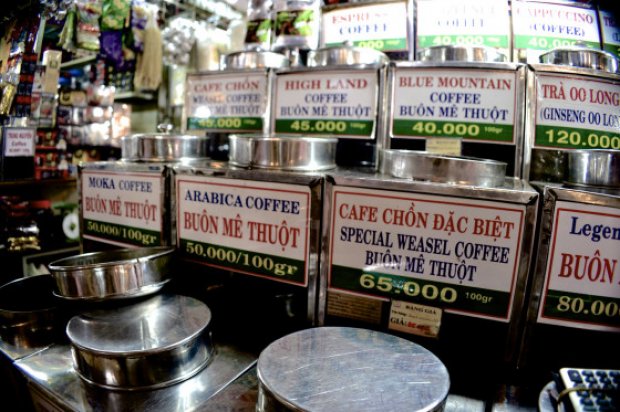
Coffee stall at Ben Thanh Market
I am a major caffeine addict which explains why I had to start with this. Vietnam is the world number 2 exporter for coffee (Brazil number 1) and they really live up to their name. Everywhere I went, even in the middle of a village at Mekong delta, I had good coffee. The coffee in Vietnam is unlike anywhere else I’ve tried and it doesn’t take a coffee drinker to realise that. My brother who usually doesn’t drink coffee really enjoyed the Vietnamese iced coffee. For regular drinkers like myself, I recommend the thick black coffee.
Also read: Coffee Lovers, Get Your Fix the Right Way at These Places
For the curious (and more adventurous) few, why not try the Cà Phê Chồn, which loosely translates into weasel coffee. It is dubbed the most expensive (and most disgusting in my opinion) coffee as it is made from the faeces of civet that feasts on coffee beans. The ones I found in Vietnam are reproduced chemically but the thought really puts me off from trying. I wouldn’t stop you if you want to give it a shot!
2. Vietnamese history and how it shaped Vietnam today
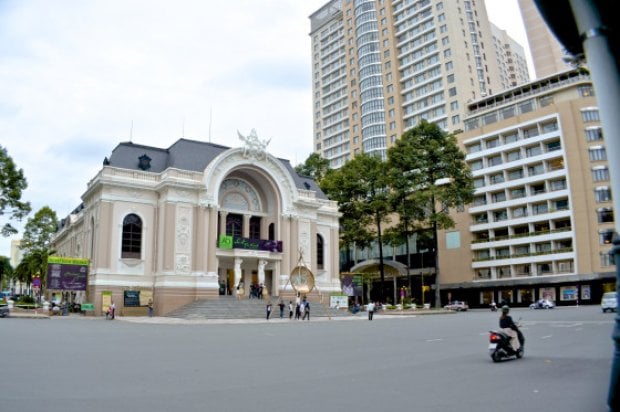
Opera House in HCM city
I was delighted to learn how unique the Vietnamese culture has evolved over the years. It is an Asian country and it shares similarities with its neighbours but Vietnam also has a strong European influence. The most obvious evidence is from its written language looking somewhat like Spanish, Portuguese or French. This is because many people / traders from Europe has stepped foot onto Vietnam (years ago, before the French colonised Vietnam), and they adopted a more familiar way of interpreting the Vietnam language, gradually evolving into modern Vietnamese language.
Also read: So You Think You Can Speak Vietnamese?
In Ho Chi Minh (former Saigon) you will find many architectural buildings that have the European presence. Don’t be surprised if you see the Notre Dame in the city centre! There are also several French bakeries sprawling over the city.
Apart from its language and culture, it is hard to miss the historical conflicts of this country. Vietnam has a really interesting past and it is worth opening your history textbook to learn about what happened and how it made Vietnam today. There were so many parties involved. French, Americans, Viet Cong, anti-colonist, pro-colonist, socialist, communist, Vietnamese from 1950s era, Vietnamese from 1970s. Relationship status: It’s complicated.
I would recommend a visit to one of the tunnel systems in South Vietnam as it was of great importance to the Viet Cong during the Vietnam War and provided them considerable advantage. I visited Cu Chi Tunnels and it is the most intricate of the tunnel systems consisting of nearly 200 miles of tunnels. During the tour of the tunnel, you will also be taken through various ingenious offensive tactics that the Viet Cong adopted during the war.
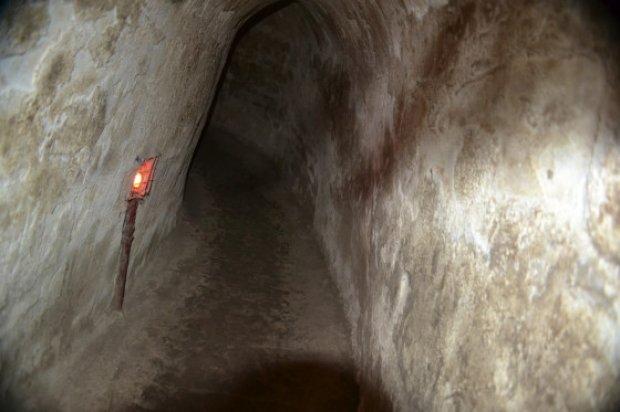
Inside the Cu Chi Tunnel
A little heads up for the Americans: There was a strong “anti-American” vibe when I visited as the war really scarred the people who were directly affected. I’m pretty sure the people now are welcoming to the Westerners but in terms of the historical warfare, there is still a ting of resentment as portrayed in their videos and written materials presented at the war museums. For the rest, Vietnam’s history is worth re-visiting.
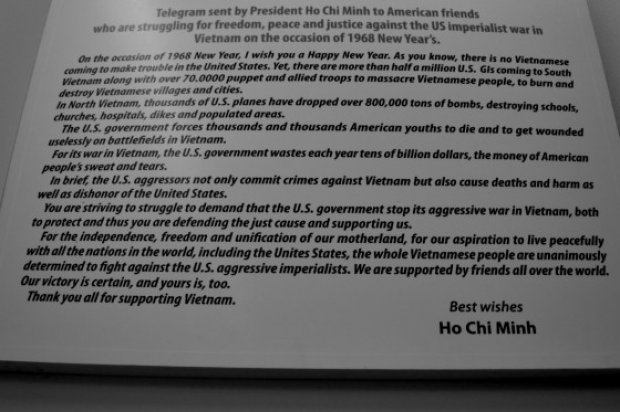
Translated telegram from Ho Chi Minh at the War Remnants Museum
3. You can’t cross the road the same way anywhere else
I’m not sure if you’ve heard about the infamous traffic in Vietnam (if you’re wondering, Bangkok and Malaysia aren’t even a close comparison). The traffic in Vietnam is mad. There are so many motorbikes and one time I even saw a family of FOUR on ONE bike (no, I’m not kidding). Despite the crazily heavy traffic, it is surprisingly safe to jay-walk across the road (or there’s no other way you can get to the other side). The traffic is heavy but it’s not fast. The motorists are generally skilled enough to swerve around you. I’ve never felt so liberated crossing the road before.
Also read: Amazing Load Balancing Acts on Vietnamese Bikes
Check out this awesome time-lapse video on the traffic in Vietnam (get ready to be blown away)
Traffic in Frenetic HCMC, Vietnam from Rob Whitworth on Vimeo.
4. Eat anything and everything
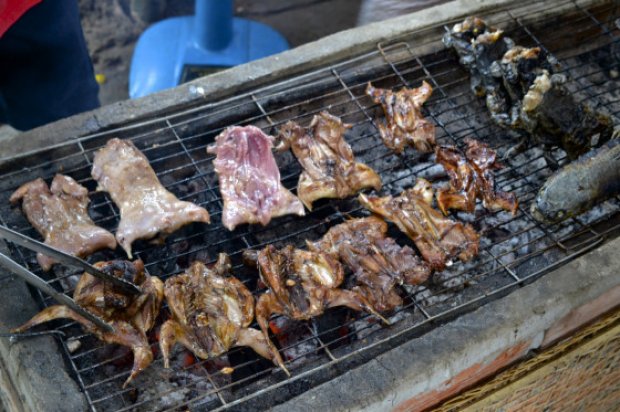
Barbecue rats and frogs
In Vietnam, you get to eat anything and everything and nobody will judge you. My guide told me that this is due to its poverty stricken past. People were too poor to afford proper food so they ate anything they could find. From dogs, to cats, to rats and tree barks. If you want to take your gastronomic experience a step further, just ask the locals and munch away. I personally tried the rat. Tasted like a tenderer version of chicken.
Also read: 21 Bizarre Asian Delicacies That You Either Love or Hate
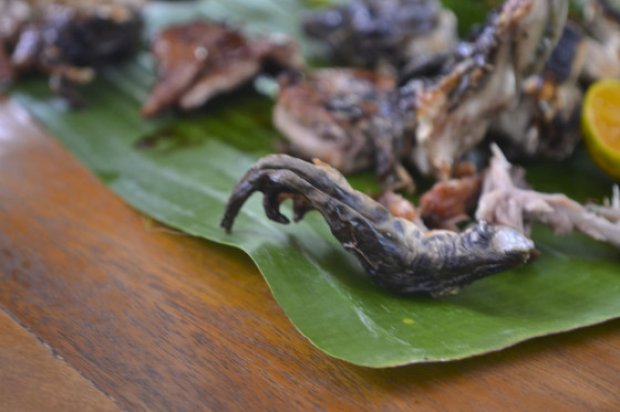
Feet of a half eaten rat
Also, this is Vietnam’s answer to viagra.
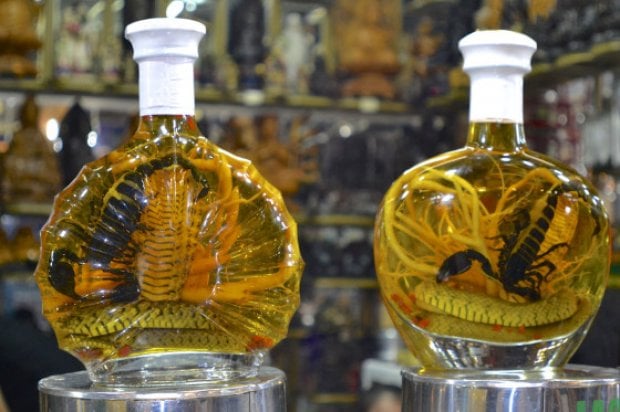
Bottle of goodness taken at Ben Thanh Market
To be fair to the food scene in Vietnam, apart from eating anything and everything, there’s actually good proper food. I tried food at street vendors, markets and chain stalls and they are all good. If you don’t want to try the rat, you must at least try the Phở (Vietnamese soup noodle).
Also read: How You Can Spend An Extraordinary Getaway in Dalat, Vietnam
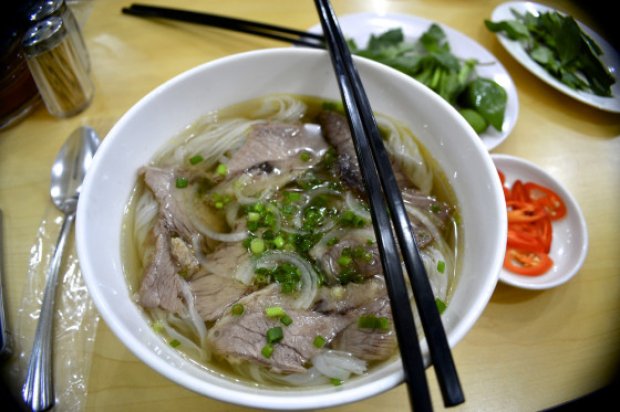
Phở from Phở 2000

Food from the market which I literally pointed at the picture and ordered.
Bonus 5th reason for my fellow Singaporeans
This 5th reason is a bonus for my fellow Singaporean counterparts. Just for your information, Ho Chi Minh City is nearer to Singapore than Bangkok. The flight is only 1 hour 50 mins. Minus take off and landing you can barely even finish a movie. IT’S SUPER CLOSE TO SINGAPORE. Tigerair and Jetstar ALWAYS have cheap flights to Ho Chi Minh City. Plus the currency is cheap against our Singapore Dollar. Give BKK a break, try HCM. You get your cheap massage and cheap food and cafes plus shopping too. And it’s the closest place you can get a “European feel” without flying 13 hours. There are great French restaurants and bakery in HCM. WHAT ARE YOU WAITING FOR?
Also read: 5 Best Luxury Resorts in Vietnam
Like all destinations, I feel that there is a need to keep an open mind and be aware of the social status of the country you’re visiting as well. To rephrase what my guide said on this trip,
“This is Vietnam and what you see is what you get. You can’t expect us to give you what you expect to get in your country if you want to see the real Vietnam. If you expect that, you don’t come to Vietnam. You don’t expect much, you will be surprised and have a good experience. Vietnamese people work very hard and you must see that. Also, Vietnam is beautiful and we are very friendly.”
Well, all I can add to it is, open your eyes, open your mind, you might enjoy it.
Welcome to Vietnam.
Peace & Love,
Eileen x
Contributed by peregrinate with me.






